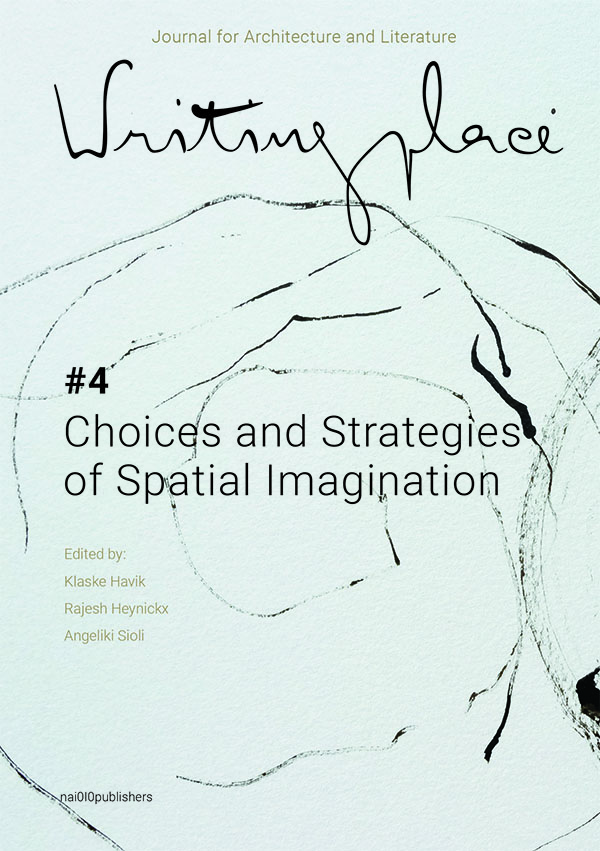She Always Forgot That the Earth Is Damp
Louise Bourgeois’ Subjectivity, City and Language
DOI:
https://doi.org/10.7480/writingplace.4.5280Abstract
French artist Louise Bourgeois (1911- 2010) moved to New York, where she would reside the rest of her life, immediately after her marriage, in 1938. As a newcomer, a new wife, and a new mother, Bourgeois spent the first few years of her American life trying to balance domesticity and artistic practice. She resorted to producing prints, which afforded her certain flexibility compared to other medium. In 1947, Bourgeois created a small, printed booklet of illustrated parables, He disappeared into complete silence. This project, originally conceived as a way of inserting herself into the creative fabric of the city, proved to be a pivotal point for the artist. In it, Bourgeois presents a cast of anthropomorphised buildings, revealing a relationship between architecture and pathos. Bourgeois’ architectural characters have been well-studied. This essay, though, wants to emphasise the way architectural and personal affect are explored in Bourgeois’ texts for the booklet, and the way the artist juxtaposes visual and textual language.
References
Briony Fer, ‘A History of the Night’, in: Emily Wei Rales and Ali Nemerov (eds.), Louise Bourgeois: To Unravel a Torment (Potomac, MD: Glenstone Foundation, 2018), 15.
Catherine Belsey, Postructuralism: A Very Short Introduction (Oxford: Oxford University Press, 2002), 37.
Dani Cavallaro, French Feminist Theory: An Introduction (London/New York: Bloomsbury, 2003), 78.
Doug Haynes, ‘She Disappeared into Unhappy Consciousness: Louise Bourgeois and the Bathos of Surrealism’, in: Sara Crangle and Peter Nicholls (eds.), On Bathos: Literature, Art, Music (London/New York: Bloomsbury, 2010), 104.
Hilary Robinson, ‘Louise Bourgeois’s Cells: Looking at Bourgeois through Irigaray’s Gesturing Towards the Mother’, n.paradoxa 3 (1997), 24.
Julia Kristeva in Noëlle McAfee, Julia Kristeva (New York/London: Routledge, 2004), 41.
Karen Koehler, ‘Louise Bourgeois: Architecture and Autobiography’, Art in Translation 10/1 (2018), 129.
Louise Bourgeois: The Complete Prints and Books, MoMA. Available at: www.moma.org/s/lb/collection_lb/allworks/allworks_sov_page-56.html, accessed 19 August 2019.
Louise Bourgeois: The Complete Prints and Books, MoMA. Available at: www.moma.org/s/lb/collection_lb/objbytech/objbytech_tech-2034956_sov_page-16.html, accessed 19 August 2019.
Louise Bourgeois, Destruction of the Father/Reconstruction of the Father: Writings and Interviews 1923-1997, edited by Marie-Laure Bernadac and Hans-Ulrich Obrist (Cambridge, MA/London: MIT Press, 2007), 315.
Louise Bourgeois: The Complete Prints and Books, MoMA. Available at: www.moma.org/s/lb/collection_lb/compositions/compositions_id-4961_sov.html, accessed 19 August 2019.
Mieke Bal, Louise Bourgeois’ Spider: The Architecture of Art-Writing (Chicago: University of Chicago Press, 2001), 44.
Mignon Nixon, Fantastic Reality: Louise Bourgeois and a Story of Modern Art (Cambridge, MA/London: MIT Press, 2008), 84.
Osnat Zukerman Rechter, ‘The Interrelations between Printmaking and Psychoanalysis in Louise Bourgeois’s Work’, Arte Fuse, available at: https://artefuse.com/2017/09/05/louise-bourgeois-pink-days-blue-days-at-gordon-gallery-125159/, accessed 19 August 2019.
Rosalind Krauss, Bachelors (Cambridge, MA/London: MIT Press, 1999), 66.



